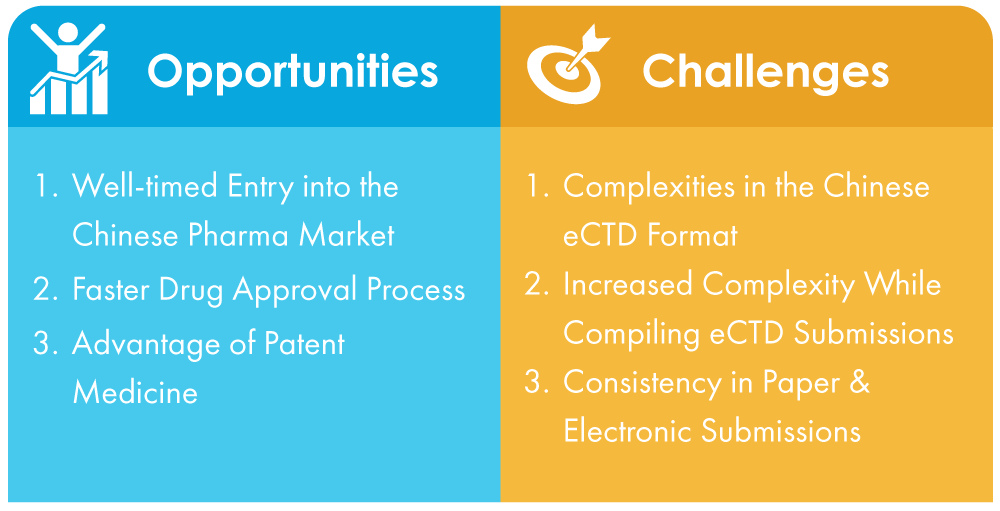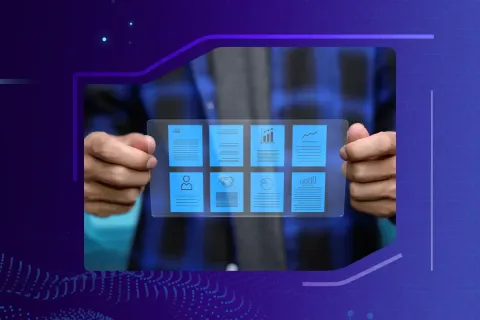
China’s pharmaceutical industry has seen substantial growth since its entry into the World Trade Organization (WTO). As of 2021, China holds a 12% share of the global pharmaceutical market, making it the second largest contributor. According to Xinhua News Agency, the Chinese pharmaceuticals market generated 708.75 billion yuan in 2021, while the Chinese domestic medicinal companies amassed 502 billion USD in profit.
As you may know, the National Medical Products Administration (NMPA), the Health Authority of China, has started accepting eCTD Marketing Authorization (MA) applications as well as Clinical Trial Applications (CTAs), paving the way for more opportunities. However, it brings its own set of challenges.
In this blog, we examine the world of electronic Common Technical Document (eCTD) submissions, as they are rapidly becoming the go-to method for document submissions in the pharmaceutical industry.
Challenges Faced by Companies in China for Adapting to Mandatory eCTD Submissions
- Complexities in the Chinese eCTD Format: Unlike the universal standard, which is quite simple, the Chinese eCTD format is complicated and can be difficult to pass through for companies that are not familiar with the process. This can lead to setbacks in presenting the essential credentials.
- Increased Complexity While Compiling eCTD Submissions: NMPA, the Health Authority of China, has implemented new rules and regulations to support the transition to electronic submissions, but firms are still expected to navigate a complex and dynamic environment. This can be more challenging for those companies that do not have a local presence or thorough understanding of the Regulatory ecosystem of China.
- Multi-Lingual Support in Paper and Electronic Submissions: The documents need to be submitted in Mandarin with English versions as a reference, which can be a difficult task for companies that do not have affiliations with qualified language translators.
Opportunities While Transitioning from Paper to Paperless Submissions
- Well-timed Entry into the Chinese Pharma Market: Entering the Chinese market has become more convenient thanks to the transformative reforms and policy upgrades implemented. One of the key changes is the adoption of electronic submissions, which streamlines the process and eliminates many of the challenges that companies once faced. This is a testament to China's commitment to promoting structural adjustments, procedural transformations, and overall market growth.
- Faster Drug Approval Process: Now that the submissions have become electronic, the drug approval process will be much faster, and hence, the process of bringing medicine to market will be smoother and quicker. This will eventually help big pharmaceutical companies further increase China’s share in the global pharmaceutical market.
- Advantage of Patent Medicine: Patent medicine is the second-largest product segment with great profit margins. However, long return periods, soaring R&D costs, and prolonged R&D periods are involved in the manufacture of originator drugs. With the implementation of electronic submissions, all these obstacles can be dealt with. As of 2022, foreign companies are still the main participants in this market. Thus, making it a niche market to target this segment.

How to be Ready for this New Implementation in China?
The transition to mandatory eCTD submissions in China presents a wealth of opportunities for companies looking to remain competitive in the world's largest pharmaceutical market. By partnering with the right expert, companies can navigate the ever-evolving Regulatory landscape with ease and confidence. To stay ahead of the curve, having a subsidiary with a local presence and an understanding of the HA regulations is crucial. Freyr SUBMIT PRO, a publishing and submissions software, helps manufacturers to enter the Chinese pharmaceutical market with ease. To learn more about the tool, request a demo.









